 March 26, 2015 John E. Ross, KD8IDJ, Editor
| |||||||||||
ARRL President, Directors, and Officers Educate and Advocate on Capitol Hill ARRL President Kay Craigie, N3KN, made a new Amateur Radio friend on Capitol Hill this month as she headed a contingent of League Directors, officers, and staff advocating for H.R. 1301 -- The Amateur Radio Parity Act of 2015. Not only that, but Rep Daniel Benishek, KB8TOW (R-MI), signed on as an H.R. 1301 cosponsor. Others new to the fold include Reps Eliot Engel (D-NY), David Joyce (R-OH), Jackie Walorski (R-IN), Kay Granger, (R-TX) and Pedro Pierluisi (NP/D-PR), raising the total number of cosponsors to 28. Benishek is one of two known radio amateurs in Congress. The other is Rep Greg Walden, W7EQI (R-OR), who heads the subcommittee that will consider H.R. 1301. "I visited 10 Congressional offices, including that of Dr Daniel Benishek, who represents Michigan's 1st District. Dr Benishek is also an ARRL member," President Craigie said this week. "He was very friendly, and I appreciated his meeting with me to talk about the bill." Benishek's legislative aide sat in on the conversation, she said. "We were already in the area for the Executive Committee meeting on March 21." If approved and signed by President Obama, the measure would direct the FCC to extend its rules relating to reasonable accommodation of Amateur Service communications to private land use restrictions -- also known collectively as "deed covenants, conditions, and restrictions," or CC&Rs. President Craigie said she got a cordial reception at all of the Capitol Hill offices she visited, and there was good dialogue with the staff people she met. "I don't mind probing questions," she added. "They show that the staff person is actually thinking about the points I'm making."
Rep Walden, also an ARRL member, and two of his subcommittee staffers met with ARRL Hudson Division Director Mike Lisenco, N2YBB; West Gulf Division Director Dr David Woolweaver, K5RAV; ARRL CEO David Sumner, K1ZZ, and President Craigie to talk about strategy for H.R. 1301 going forward. "At the end of the meeting, I asked Rep Walden how the ARRL could help him to help us," President Craigie recounted. "He replied that it's essential to continue educating people on the Hill -- members of Congress, Senators, and their staffs -- about the value and importance of Amateur Radio." President Craigie said ARRL officials can't do the job by themselves, though. "ARRL members throughout the country must take advantage of every opportunity to convince our lawmakers that Amateur Radio is beneficial and that this bill is key to maintaining Amateur Radio as a resource," she said. She encouraged ARRL members to write or call their US House members, urging them to sign on as H.R. 1301 cosponsors. A regularly updated H.R. 1301 page on the ARRL website includes key "talking points" and other information for Amateur Radio delegations or individuals to use when contacting US House members for their support.
"Members of Congress may hold open town hall meetings or be available to meet with constituents in the home district," President Craigie pointed out. "The information we need to prepare ourselves is posted on the ARRL website. It's not rocket science. It's just telling someone briefly in plain English how Amateur Radio makes our communities better places to live and then asking for co-sponsorship of H.R. 1301." Others in the ARRL team visiting Capitol Hill were First Vice President Rick Roderick, K5UR; Second Vice President Jim Fenstermaker, K9JF; Pacific Division Director Bob Vallio, W6RGG, and ARRL General Counsel Chris Imlay, W3KD. ARRL Centennial Points Challenge, W1AW WAS Awards Application Window Open The window to apply for ARRL Centennial Points Challenge and W1AW Worked All States awards is now open. The ARRL Centennial operating events were hugely successful, with participation that exceeded all expectations.
"This was the biggest on-the-air operation in the history of Amateur Radio," ARRL Chief Operating Officer Harold Kramer, WJ1B, said. More than 5.5 million Centennial event contacts were recorded in Logbook of The World (LoTW) during 2014. That number includes contacts with W1AW portable operations as well as those with individual ARRL members and Field Organization volunteers. W100AW completed about 70,000 contacts. For most applicants, the process will be simple and largely automated, explained Norm Fusaro, W3IZ, Assistant Manager, Field Services and Radiosport Department. "The form will auto-populate, if we have your information on file, and the form can be edited to update name and address information only," Fusaro said. "The system will select the awards for which you qualify. Certificates will be printed daily, so fulfillment will be ongoing, while plaques will be shipped directly from the supplier." Fusaro said ARRL Headquarters has hired extra staff to handle the added workload. Certificates will be available for the Centennial Points Challenge Award, while W1AW WAS Award participants will have the option of a certificate or a plaque. Certificates are $16, and plaques are $60.
Fusaro said the task of checking and double-checking electronic logs, entering paper logs into LoTW, and resolving various anomalies put an unexpected burden on staff resources and delayed the opening of the awards window. ARRL Headquarters also had to recalculate all submitted scores to come up with final tallies. "It's been a very time- and staff-intensive process, researching busted call signs and running down claimed contacts and mode discrepancies for operators," Fusaro said. Centennial Points Challenge logs must have been submitted through LoTW by January 22, but participants may apply for Centennial operating awards indefinitely. The system automatically looks for points-qualifying QSOs from submitted logs and applies them to each participant's Centennial Points Challenge total. While most Centennial QSO Party participants entered their contact information into LoTW, operators do not have to use LoTW to apply for Points Challenge certificates or W1AW WAS awards. Qualifying for the Top Level Award requires 15,000 points. The Third Level Award requires 7500 points, while the Second and First Level awards require 3000 and 1000 points, respectively. Point totals will be printed on certificates.
US stations that worked W1AW/p and W100AW during the Centennial may request QSL cards via the Incoming QSL Service on the Centennial QSO Party web page. This is a one-time only use of the QSL Bureau for this purpose, and those who want to receive cards via the Bureau should ensure that their accounts are sufficiently funded, because cards will not be held. Cards destined for stations outside the US will be sent via the QSL Bureau. Participants also may request cards directly, providing one SASE for up to six cards per envelope. W1AW/p and W100AW will not confirm every contact on the traditional paper QSL cards, but will confirm QSOs for each mode and on most bands on a single card for each weekly operation. Preparatory Meeting Under Way for World Radiocommunication Conference 2015 International Amateur Radio Union (IARU) President Tim Ellam, VE6SH/G4HUA, is on hand as the second session of the World Radiocommunication Conference 2015 (WRC-15) Conference "The WRC is preceded by a long and rigorous preparatory process to lay the groundwork and ensure that delegates are informed on all the issues and understand the implications of the different options under discussion," said ITU Secretary-General Houlin Zhao. Zhao called the CPM "an extremely important meeting" that may resolve various WRC-15 agenda issues. Of importance to many radio amateurs is Agenda Item 1.4, involving the possibility of an Amateur Radio allocation in the vicinity of 5 MHz. No US proposal has been finalized on Agenda Item 1.4. The US proposal for Agenda Item 1.12 -- to expand the Earth Exploration Satellite Service (EESS) in the vicinity of 10 GHz -- supports allocating an additional 600 MHz of spectrum to the EESS (active) as a
primary allocation in the band 9.9-10.5 GHz, with certain limitations. The Amateur and Amateur-Satellite services have secondary allocations of 10.0-10.5 GHz and 10.45-10.5 GHz, respectively; the only current primary allocation is to Radiolocation. An ITU concluded that the interference potential of EESS (active) to Amateur Radio was limited to very brief and infrequent periods. US proposals on WRC-15 agenda items that already have been agreed upon are available on the National Telecommunications and Information Agency (NTIA) website. Each proposal represents the US position on WRC-15 agenda items for possible changes to the international Radio Regulations. During the preparatory process, ARRL Chief Technology Officer Brennan Price, N4QX, has been advocating on behalf of positions favorable to Amateur Radio at WRC-15. Price will be a member of the US delegation at WRC-15. World Radiocommunication Conferences, held every 3 to 4 years, are mandated to review and, where necessary, revise the Radio Regulations, the international treaty governing the use of the radio-frequency spectrum and the geostationary-satellite and non-geostationary-satellite orbits. The agenda is determined by ITU Council. -- Thanks to the ITU Global Amateur Radio Emergency Conference Returns to its Roots for 2015 Ten years after its inaugural session in Tampere, Finland, the Global Amateur Radio Emergency Conference (GAREC) will return to that city on Tuesday and Wednesday, June 23-24. The theme of the international event will be "Cooperating with Authorities." GAREC 2015 has extended an invitation to all involved in emergency communication around the world.
Hosting GAREC 2015 will be the Finnish Amateur Radio League (SARL). Finland's national emergency communications society, Suomen Radioturva (SRT), will organize the event. Program Committee Chairman Seppo Sisättö, OH1VR, will review the development of the GARECs from 2005 to 2015. He will also chair a session laying out an emergency communication scenario. IARU Regional 1 Emergency Communications Coordinator Greg Mossop, G0DUB, is scheduled to moderate two panel discussions -- "Cooperating with Authorities -- What have we done?" and "Cooperating with Authorities -- What should we do?" Juha Hartikka, OH7HJ, will introduce a forum on "The Tools for Amateur Radio EmComms" and a "Long-Range Provincial EmComm Repeater." Representatives from all three IARU regions will deliver reports during a session chaired by SRT President Jyri Putkonen, OH7JP. Other GAREC 2015 moderators will include SRAL President Merja Koivaara, OH1EG. A preliminary GAREC 2015 program and more information are available on the GAREC 2015 website. -- Thanks to IARU Region 1 Hams on Vanuatu Help with Cyclone Recovery Effort Vanuatu radio amateur Rod Newell, YJ8RN, reported this week that his home survived the recent devastation from Cyclone Pam with only minor damage, although he still has no electrical power. A bank of solar panels and a small gasoline generator are permitting him to live off the grid at least for a little while.
"I have had light and ice cream all the way through," the Australia native told The Daily DX. He ran his two-stroke 800 W generator 15 hours a day for 10 days to keep his refrigerator and water pump running. He has estimated that commercial power will be out for another 10 days or so. While the Island of Éfaté, where Newell lives, still has leaves on its trees, there are many broken branches. He noted that Vanuatu connected to a fiber optic cable in early 2014, which made it possible for scenes of destruction to be shared with the rest of the world. Newell said the northern part of the island archipelago caught just the edge of the storm and suffered little damage. The southern island of Tanna, with some 30,000 inhabitants, and Erromango, just north of Tanna and with barely 2000 residents, were the worst hit. On Tanna, the cyclone blew leaves from trees that have been left bare and brown, although palm trees seem to have fared better. Crops are just bare stalks, and local produce markets have had to shut down, he said. Newell estimated that it could take about 6 months for farmers to once again produce such local stables as manioc, although crops such as cabbage could be ready within 6 weeks. Malekula, mid-way between Éfaté and Santo, suffered some tree damage on ridge tops but is otherwise green. Santo was largely unscathed, and the produce market has been open.
Newell said he spent 3 days on Tanna setting up HF radios for the local airline, the Red Cross, and the police, and he just returned from doing the same on Santo to the north. The YJ0XG operation by Haru Uchida, JA1XGI, is still on schedule for April 13-19. The resort he booked suffered only minimal damage from the cyclone, although ac power is still being worked out. The ZL3X group that operated from Vanuatu last October as YJ0X has donated $1000 to the Red Cross appeal. -- Thanks to The Daily DX Virginia Ham Test Session Yields Winners from Ages 9 to 90 None of the 34 candidates at a February 28 ARRL VEC Amateur Radio testing session in Virginia's Tidewater region went home empty handed. Among the successful applicants was a nonagenarian former licensee who had been out of ham radio for 60 years, and sisters aged 9 and 12. Every applicant passed at least one of the tests attempted. Turnout at the session, sponsored jointly by the Hampton Public Service Team (HPST) and the Southern Peninsula Amateur Radio Klub (SPARK), was impressive, said Volunteer Examiner Tom Taché, WE4TOM.
A 90-year-old man who had not been licensed since the 1950s rejoined the ham radio ranks by passing the Technician test, then presented his 1950-vintage Advanced ticket to qualify for a General license. An 80-year-old man became a ham for the first time by passing the Technician examination. A 9-year-old girl and her 12-year-old sister both earned their Technician licenses, and a 10-year-old girl and her 12-year-old brother both earned General tickets at the test session. Four candidates went from Tech to Extra in one fell swoop, passing all three license exams at the Virginia session.
Taché said 23 candidates walked in the door unlicensed, and all left with a ham ticket in hand. Seventeen of the newbies earned Technician licenses, while another six went on to pass the General exam, and four continued on to earn their Amateur Extra license. One applicant achieved a perfect score on all three examinations. The turnout represented an all-time record for the groups' test sessions, and Taché said it was especially impressive for an exam session not held in conjunction with a hamfest. Taché credited three factors with contributing to increased interest in the examination session: The SPARK website, word of mouth among area hams, and Technician licensing classes that SPARK had offered in January and February. Of the 52 examinations that were administered, six candidates who attempted the General test and two who took the Amateur Extra exam did not pass. Two Centenarian Radio Amateurs Honored Two distinguished centenarian radio amateurs recently were honored by their respective states. In Alaska, 102-year-old ARRL member Arlene "Buddy" Clay, KL7OT, was inducted into the Alaska Women's Hall of Fame for her work in rural justice administration among the Yup'ik people. Responding to a 1944 QST advertisement, Buddy Clay and her late husband Earl, KL7EM, went to work as air traffic
controllers for the Civil Aeronautics Board (CAB) in Nome. After a transfer to Aniak, a tiny Yup'ik settlement, they built a cabin overlooking the Kuskokwim River, eventually left the CAB, and lived off the land for the next 10 years, developing a dogsled team to aid in hunting. Buddy became a ham in 1948 and began calling the Thursday night Snipers Net for the Matanuska Amateur Radio Association, a duty she continues from her retirement community home in Wasilla. After Earl Clay died in 1956, Buddy went back to work for the CAB and for the US Postal Service. In 1960, though, she started a new career as a magistrate for the Alaska Court System, becoming responsible for 12 villages along the Kuskokwim, Yukon, and Iditarod rivers. She traveled from village to village by boat in the summer and by dog sled in the winter. In all, she spent nearly 70 years living in Alaska's wilderness.
In Utah, the State House of Representatives honored Greef "Richard" Beckham, W7FVM, on the occasion of his 100th birthday. A Texas native, Beckham is believed to be the last living member of the US Navy team that searched for famed aviator Amelia Earhart after she went missing over the South Pacific. Earhart's fate remains unknown. As an observer aboard a Navy seaplane, Beckham sent the first CW messages that Earhart was missing. He also shot and owns the only film footage ever taken of the Earhart search operation. After his Navy tour, Beckham became a science teacher in Oregon. He earned a pilot's license and became active with the Civil Air Patrol. Beckham has applied to join a June International Group for Historic Aircraft Recovery (TIGHAR) mission that hopes to solve the Earhart mystery. -- Thanks to the Nevada Amateur Radio Newswire; the information about Richard Beckham was originally broadcast by KSL-TV in Salt Lake City. In Brief...
The K7RA Solar Update Sunspot numbers and solar flux both rose this week. Average daily sunspot numbers on March 19-25 were up 24.8 points to 83.9, compared to the previous 7-day period. Average daily solar flux rose from 117.5 to 122.4.
We saw one new sunspot region on March 19, two on March 21, three on March 22 and again on March 23, and yet another new one on March 24. Predicted solar flux is 150 on March 26-28, 145 on March 29-30, then 150, 155, and 145 on March 31 through April 2, 130 on April 3-5, 125 on April 6-8, 120 on April 9-10, 115 on April 11-19, 120 on April 20, 115 on April 21, 120 on April 22-23, and 125 on April 24-27. Predicted planetary A index is 8 on March 26-27, 25 on March 28-29, 10 on March 30-31, 5 on April 1, then 10, 15, and 12 on April 2-4, 5 on April 5-6, 8 on April 7-8, 5 on April 9-11, 15, and 30 on April 12-13, 20 on April 14-16, 15 on April 17, 20 on April 18-19, then 12, 5 and 15 on April 20-22, and 25 on April 23-24. This weekly "Solar Update" in The ARRL Letter is a preview of the "Propagation Bulletin" issued each Friday. The latest bulletin and an archive of past propagation bulletins is on the ARRL website. In Friday's bulletin, look for an updated forecast and news from readers, including a report from one unlucky ham who had planned to operate on 17 meters while vacationing in Florida for a couple of days. Unfortunately, his stay coincided with the peak effect of the recent large disturbance, and he heard no signals for the 2 days he was there. Send me your reports and observations. -- Tad Cook, K7RA Just Ahead in Radiosport
See the ARRL Contest Calendar for more information. Upcoming ARRL Section, State, and Division Conventions and Events
Find conventions and hamfests in your area.
. . .
Subscribe to...
Free of charge to ARRL members...
| |||||||||||
%20with%20Kay.jpg)
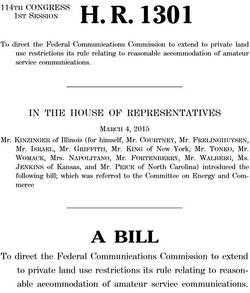 President Craigie pointed out that one opportunity to contact their representatives in person would be during the Easter recess, March 27 through April 12, when lawmakers or their aides will be available at their district offices. At this time, League members are being encouraged to contact only US House members. Similar legislation has not yet been introduced in the US Senate.
President Craigie pointed out that one opportunity to contact their representatives in person would be during the Easter recess, March 27 through April 12, when lawmakers or their aides will be available at their district offices. At this time, League members are being encouraged to contact only US House members. Similar legislation has not yet been introduced in the US Senate.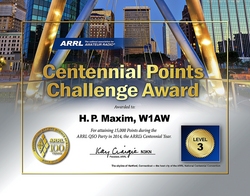
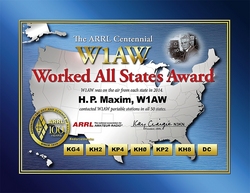
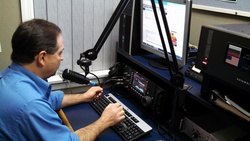
.png) Preparatory Meeting (CPM) opens March 23 in Geneva, Switzerland. Delegates to the CPM will consider regulatory, technical, operational, and procedural studies of WRC-15 agenda issues and issue a report for presentation to WRC-15 delegates in advance of the conference this November.
Preparatory Meeting (CPM) opens March 23 in Geneva, Switzerland. Delegates to the CPM will consider regulatory, technical, operational, and procedural studies of WRC-15 agenda issues and issue a report for presentation to WRC-15 delegates in advance of the conference this November.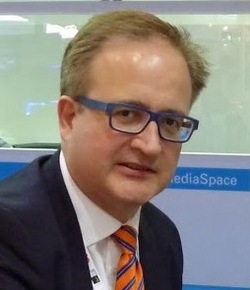

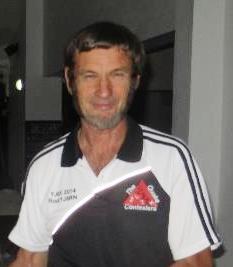
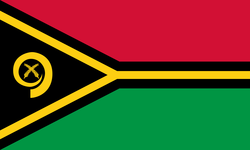 Humanitarian efforts are well under way, with planes and helicopters coming in to help. Relief ships are starting to arrive, but Newell said it will be a long time before housing, schools, and water supplies are back to normal on Tanna. One radio amateur has put his Twin Otter aircraft to use as part of the relief efforts.
Humanitarian efforts are well under way, with planes and helicopters coming in to help. Relief ships are starting to arrive, but Newell said it will be a long time before housing, schools, and water supplies are back to normal on Tanna. One radio amateur has put his Twin Otter aircraft to use as part of the relief efforts.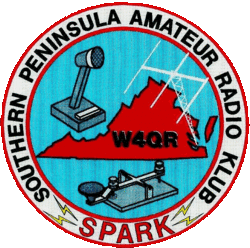 "We had some stunning results," Taché said. "Four of the individuals who came in with no license earned their Extra tickets at this exam session, and another individual who already had a license also earned an Extra ticket." Robert Uiterwyk, W3AF, headed the 15-member VE team.
"We had some stunning results," Taché said. "Four of the individuals who came in with no license earned their Extra tickets at this exam session, and another individual who already had a license also earned an Extra ticket." Robert Uiterwyk, W3AF, headed the 15-member VE team.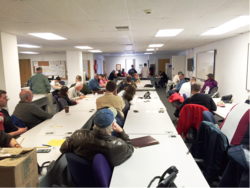
.JPG)
.jpg)
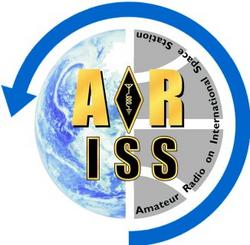 ARISS Announces NA1SS Listening Opportunity: An
ARISS Announces NA1SS Listening Opportunity: An 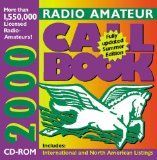 Web Article Explains How to Research Old Ham Call Signs: A web article, "
Web Article Explains How to Research Old Ham Call Signs: A web article, "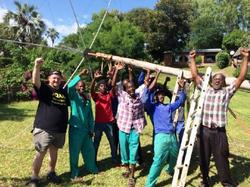 Malawi 7QAA Operation Aiming for 60,000 Contacts, WPX SSB Operation Planned: The twin-team
Malawi 7QAA Operation Aiming for 60,000 Contacts, WPX SSB Operation Planned: The twin-team 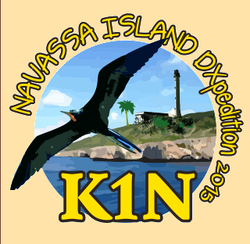 Everything You Ever Wanted to Know about K1N: Co-Team Leader Glenn Johnson, W0GJ, has prepared a
Everything You Ever Wanted to Know about K1N: Co-Team Leader Glenn Johnson, W0GJ, has prepared a  The average planetary A index dropped from 29.4 to 19.4, although conditions continued to be active. March 22-23 had planetary A index numbers at 24 and 21, but there was nothing like the index of 117, recorded on March 17.
The average planetary A index dropped from 29.4 to 19.4, although conditions continued to be active. March 22-23 had planetary A index numbers at 24 and 21, but there was nothing like the index of 117, recorded on March 17.







